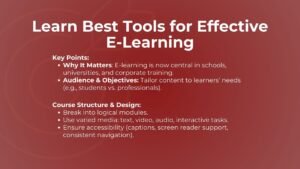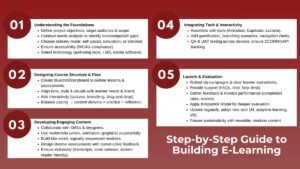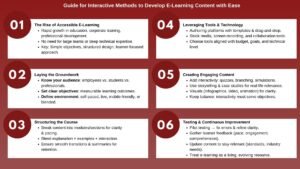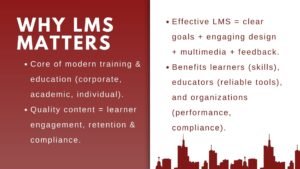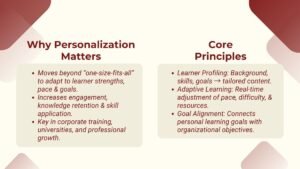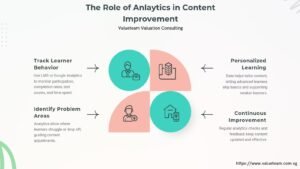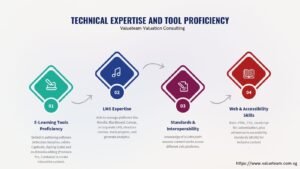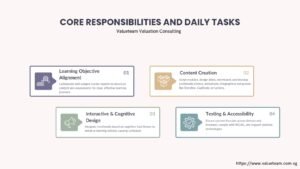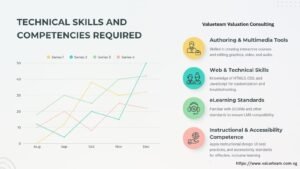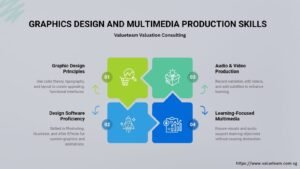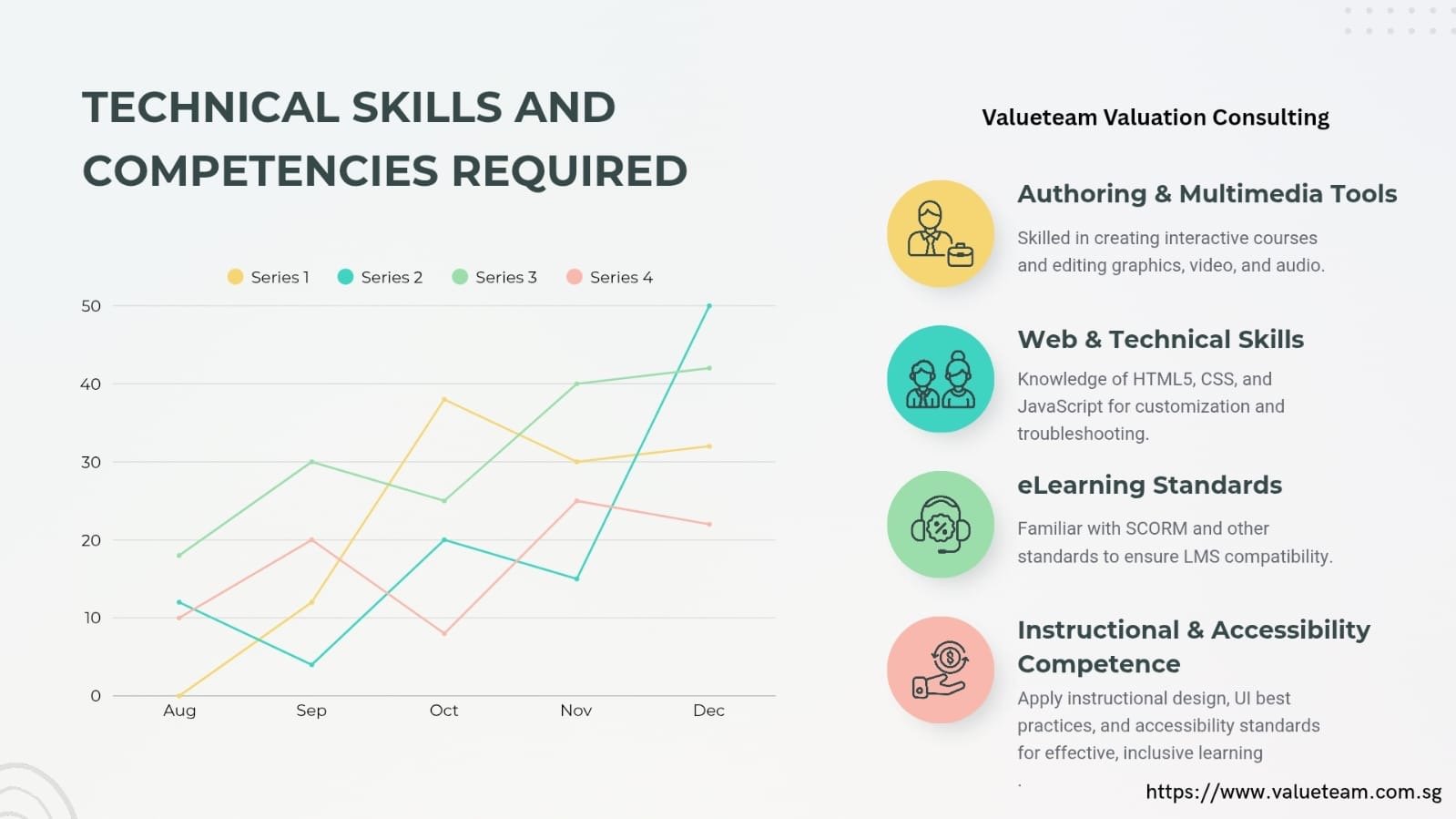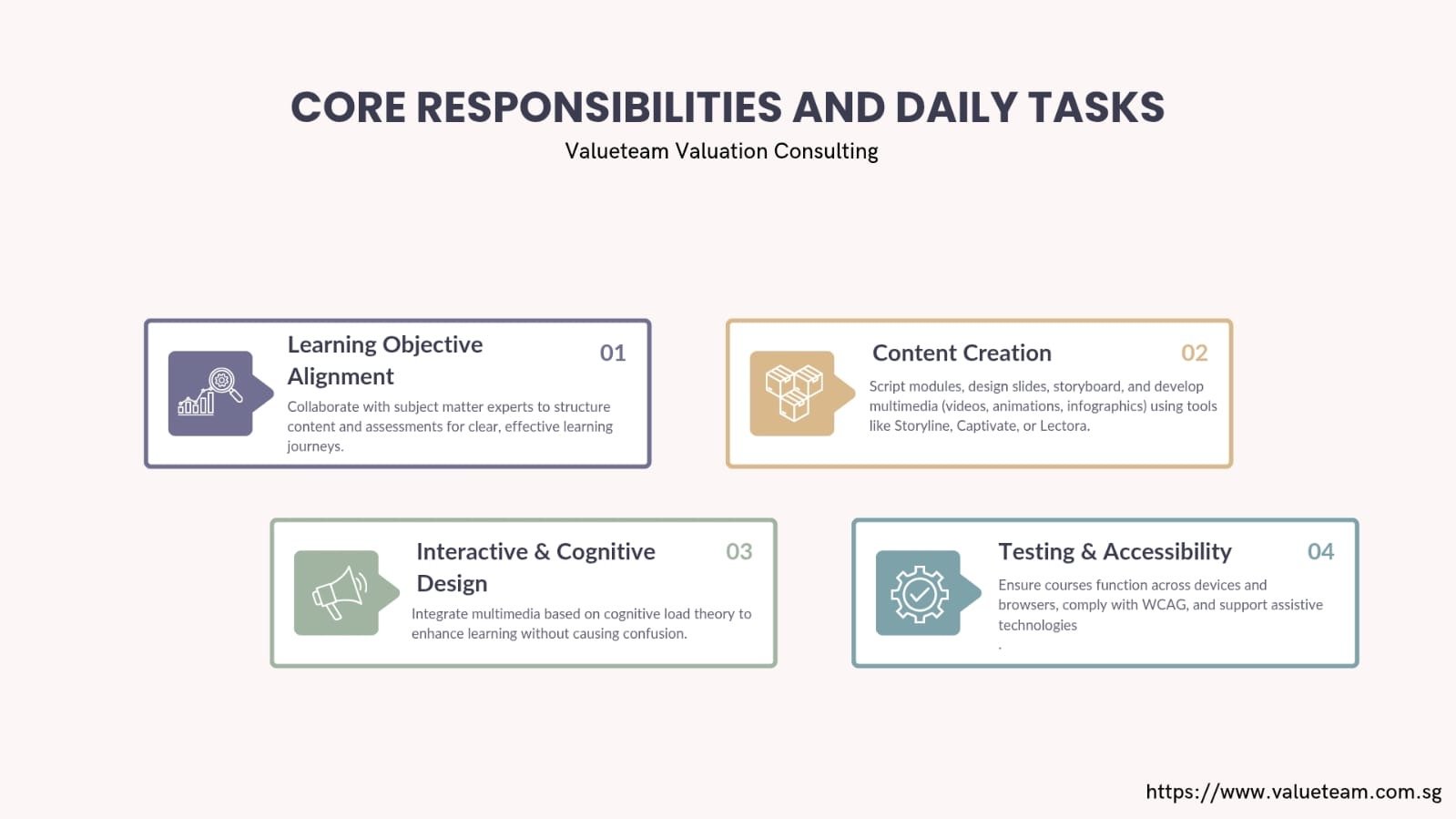
Simple eLearning Developer Singapore Best Can Do?
Simple eLearning Developer Singapore Best Can Do?
Introduction to the Role of an eLearning Developer
eLearning developers are now key designers of learning experiences in a digital-first educational and training environment. Their involvement in work is much deeper than posting materials into a learning management system. An eLearning developer plans, develops, and publishes interesting, interactive and pedagogically friendly digital learning experiences. They are also innovative narrators and technical trouble-shooters integrating the instructional design theory and the possibilities of using contemporary technology. Building training in corporate compliance, online courses at colleges and universities, or hands-on interactive simulations of industry-specific environments in many cases, their demands demand a specialized understanding in educative endeavors along with familiarity with technology as well as having a comprehensive perception of human learning dynamics.
The workspace of these people will be according to the environment they are working in. Within a corporation training department, eLearning developers may specialize in developing the skills of employees and new employee training and development programs. They can work with higher-ed faculty in converting print and media in a classroom into online courses. Within the business of commercial learning, they may involve designing learning products that are sold by the firms as part of a major service deal. In all the above environments the developer is the connector between the teaching objectives and the experience that is in the real world.
Core Responsibilities and Daily Tasks
Every day activity of an eLearning developer normally begins with familiarising with learning objectives. They also work together with subject matter experts small business valuation Singapore in such a way that they can turn complicated knowledge into systematic learning journeys. This entails clarification of the most important messages, structuring contents in order that promotes understanding, and the inclusion of assessments that certify the development of learners.
Content creation is one of the key roles of these people. This comprises the scripting of eLearning modules, slide designing, contributing to storyboarding as well as development of multimedia contents in terms of videos, animation, and infographics. Authoring tools such as Articulate Storyline, Adobe Captivate, or Lectora are also available to developers who want to develop interactive experiences that engage the learner and stimulate the use of active interaction. They also have multimedia elements integrated such that they correlate with the cognitive load theory ideology so that the images and sounds complement each other to enrich the learning process instead of confusing it.
Besides development tasks, eLearning developers have to work with testing and quality assurance. They make sure that courses work properly on various devices, browsers and learning management systems. Another important factor is accessibility, where the developers need to meet such standards like WCAG to ensure that their content is accessible to the learners with disabilities. This includes the use of alt text on images, closed captions on videos, as well as the fact that interactions can be read by the use of assistive technologies.
Technical Skills and Tools of the Trade
The job of an eLearning developer is broad on the technical scale. They must excel with industry-trending authoring tools, learning management systems, and multimedia production programs. The standard tools to create interactive modules are Articulate Storyline and Adobe Captivate and the tools to create visual assets include Adobe Photoshop and Adobe Illustrator. They may include video editing applications such as Adobe Premiere Pro or Camtasia in their set of tools to make and edit instructional videos.
In addition to developing content, it is of importance to learn about learning management systems. The courses that developers normally upload, configure and monitor are often done through Moodle, Canvas, Blackboard, or bespoke corporate LMS systems. They operate using SCORM, xAPI or AICC standards so that learning data gets tracked and reported appropriately. Such technical literacy enables them to fit their courses into current training ecosystems in an as seamless as possible manner, delivering an easy, consistent experience to the learners.
Programming knowledge is not always a requirement but it can be a great asset. HTML5, CSS, and JavaScript skills enable developers to create unique learning experiences that are not restricted byOut of the box authoring applications. Such technological freedom may be necessary towards accommodating special client or institutional needs. The usage of analytics tools is also familiar as it allows developers to track how well their course is doing, utilizing data on learners to influence their changes and upgrades.
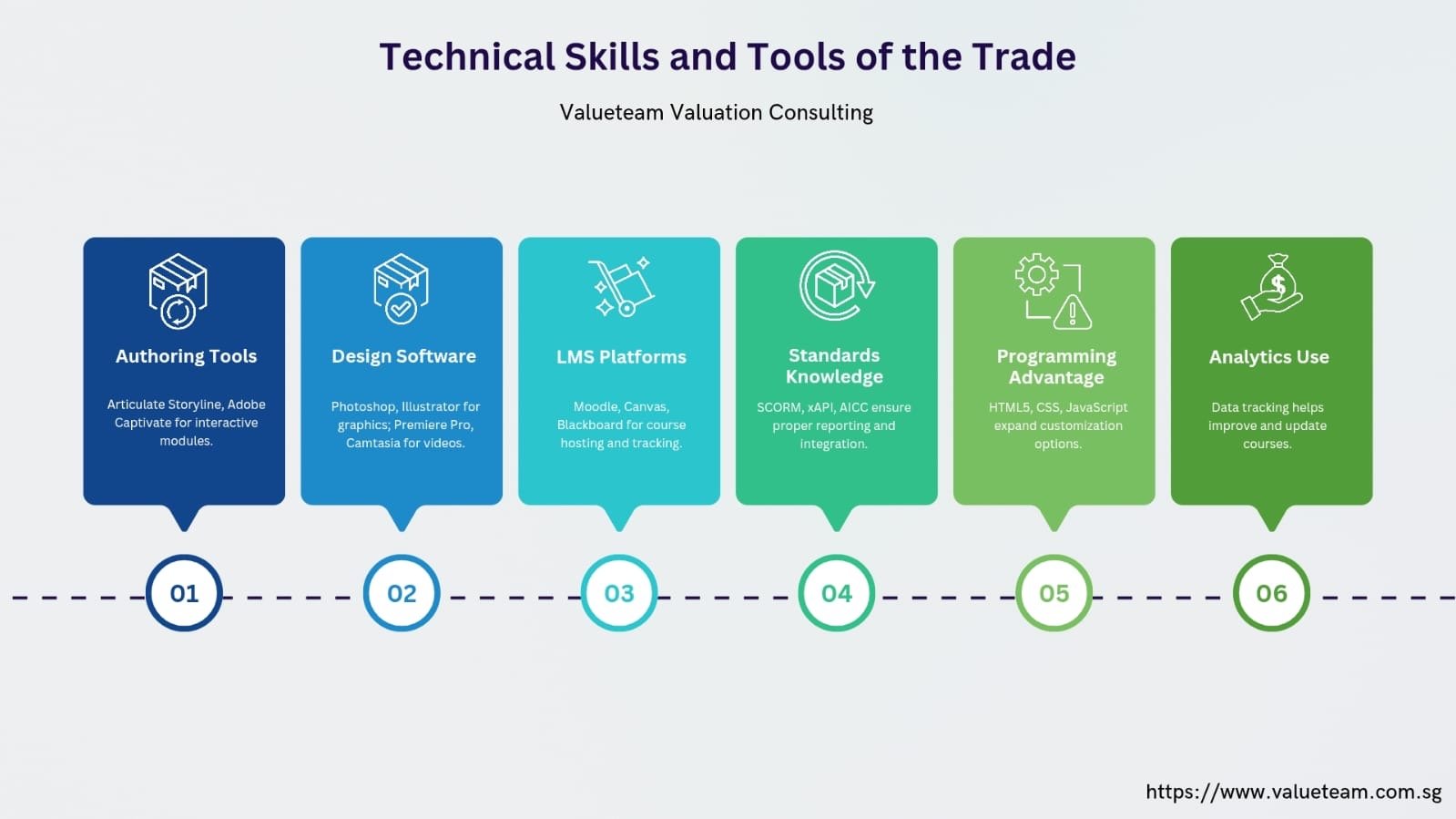
Collaboration with Instructional Designers and Subject Matter Experts
As much as the profession of an eLearning developer is involved with much technicality, it is very much team oriented. No developer is an island; rather, a developer works in collaboration with all the activities, including the instructional designers, subject matter experts, the graphic designers, and project managers to generate elegant learning products. The instructional designer describes the pedagogical structure, the SME brings the content expertise and the developer is the one who transforms the above by means of converting it into a dynamic, working course.
Communication is crucial towards this. The developers are required to bring out a translation of educational objectives into interactive functions, without losing the targeted learning results. They can familiarize themselves with the requirements of adult learning structure and the power of their tools to suggest certain designing elements. A case in point, they could recommend transforming a snippet of long text into an interactive scenario or replacing an array of static charts with animated infographics that will help a learner overcome a body of complex data in step-by-step manner.
This is also a team process in review and remodeling of course material. Developers tend to show prototypes to get feedback to that end, and new versions of the project must include the adjustments of different stakeholders, remaining within the budget and schedule. This involves reconciling creativity and practicalities like budget, timeframe and technical possibilities.
The Creative and Analytical Sides of the Role
It is one of the most interesting things about working as an eLearning developer that you need to combine creativity and analysis. On the one hand, the position requires creative work in storytelling, visual design, and interaction design. Developers have to consider ways of how to translate abstract notions to an attractive and memorable sensation. They create branching scenarios, gamified actions and multimedia, which provide the ability of the learning to seem active instead of passive.
Conversely, they should be analytical concerning instructional effectiveness and performance of the learners. This includes the creation of assessments that promote learning goals, evaluation of completion rates and score of the quizzes and using the data reports to determine who might be weak in what. An equal mix of innovative approaches to engaging the students and analytical understanding will help the developers revise their courses with time so that they could provide the necessary results.
Such bi-polar attitude also implies that eLearning developers themselves are continually learning. Since technologies developed and new instructional strategies appeared, they have to keep up with the tendencies in the industry. This may be in terms of testing out virtual reality simulations, adaptive learning algorithms, or microlearning modules meant to be mobile-first.
Career Path and Professional Development
An eLearning developer can take up many forms regarding their career. Others join as an instructional designer or a multimedia specialist and then they enter development. Others switch companies, leaving the teaching or corporate training, or graphic design areas and switch to eLearning. Developer skills can result in more senior careers like: senior eLearning developer, learning experience designer, or even eLearning project manager in charge of larger projects.
Continuing development is necessary in order to remain competitive in this field. Certifications can also be advisable in popular authoring tools, project management methodologies or learning management systems. Visiting IT industry conferences, following webinars, and being a member (or manage) professional associations, such as the Association for Talent Development (ATD), can keep developers up to date on the newest technological advances in the sphere. With the trend in learning growing with artificial intelligence, gamification, and immersive technologies entering the space, the most career opportunities will lie with developers that can keep pace with the changes.
Certain eLearning developers gradually narrow down to niche applications in their arts like compliance training, sales enablement, healthcare education, or even training on technical skills. Some go into freelance or consulting careers and they sell their skills to various organizations. Location ceases to be an impediment with the increasing prevalence of remote work, and developers get the possibility of cooperating with clients and teams worldwide.
Conclusion: The Value of eLearning Developer Singapore in Modern Learning
At a time when learning and training are becoming online, eLearning developers are becoming very crucial in the process of learning for individuals. They integrate learning theory and technical implementation making sure that the learners are provided with materials that are involving, understandable, and efficient. They also demand individual creativity in their work with technical details as well as cooperation and analysis skills. eLearning developers design experiences that have the potential to change knowledge delivery in different industries by being aware of the art of storytelling and science of learning.
One of my pet peeves has been calling eLearningdevelopers as building content. No matter what you are developing (corporate training, higher education, or specialisms), these developers are not content builders, but the people who make learning at scale possible. The mere fact that they can combine the instructional objectives with the meaningful digital solutions means that organizations are able to train their employees, educate students, and share knowledge effectively, which is efficient, scalable, and enduring. The role of the eLearning developer will change or mature in the future as the technological landscape in general evolves and therefore at this stage it is an exciting career that continues to offer opportunity as well as challenge as time moves on.



